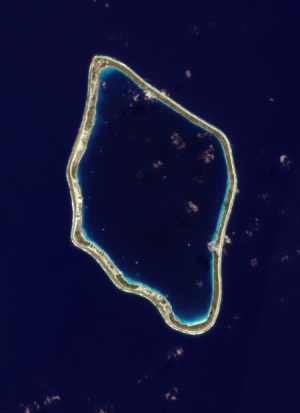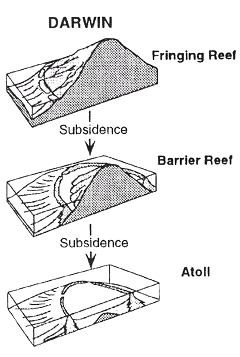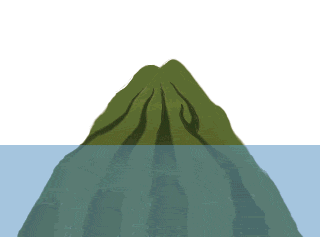From fringing reefs to atolls
Doesn't it look like paradise?
The following photo-like satellite image is the island of Tureia, in French Polynesia. A beautiful atoll has formed, surrounding a lagoon. It's almost as if this coral reef were just floating on the ocean.
How is this possible?

Source: NASA.
What are atolls?
Atolls are ring- or horseshoe-shaped reefs surrounding a lagoon. They are not connected with any land except for an occasional island of purely coral formation.

Darwin's Subsidence Theory (1842)

Source: Ghent University.
Besides growing on the shore of the mainland, some coral reefs start growing on the shore of a high volcanic island, as a fringing reef.
As this island begins to erode and sink, the coral reef grows upwards, forming a barrier reef further offshore.
When this process continues, the lagoon between the barrier reef and the high volcanic island becomes wider and deeper. Ultimately, the peak sinks beneath the water, leaving only the reef in place. At this point, the island becomes an encircling barrier reef which now forms an atoll.

A very slow process
Corals begin to settle and grow around an oceanic island forming a fringing reef. Then it can take as long as 10,000 years for a fringing reef to form. Over the next 100,000 years, as the reef expands, the interior island usually begins to subside and the fringing reef turns into a barrier reef. In total, the process of atoll formation may take as long as 30,000,000 years to occur.
